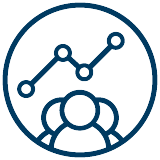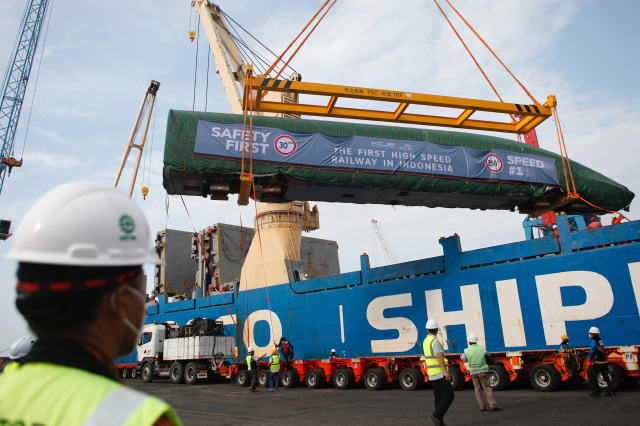 | Know better. Do better. |  | Policy, honestlyThe real-life impacts of policy decisions |
|
| | China shows us what “trade, not aid” can look likeArguably the most devastating effects felt globally of a policy reversal since Donald Trump took office in the United States has been the dismantling of USAID.
My colleagues at Context have been covering this relentlessly, showing how it has left Syrian refugees without milk and diapers in Lebanon, cut tuberculosis programs in India, and threatened maternal health across Africa. U.S. officials have unveiled a new approach in Africa in particular, where the most concentrated poverty exists.
“Trade, not aid, is now the pillar of our policy in Africa,” the top U.S. official on the continent, Troy Fitrell, said in Abidjan, Cote D’Ivoire last month.
Many of you will hear echoes of China’s approach to the continent, focusing on economic partnerships rather than traditional development aid, so this week, we are diving into China’s policy.
The policy
Chinese President Xi Jinping launched China’s Belt and Road Initiative in 2013 with the aim of creating trade routes and exerting influence in lower- and middle-income countries.
As part of the initiative, Beijing has lent billions of dollars to build massive infrastructure projects such as railways, highways and ports to connect Asia, Europe and Africa. The loans are issued by state banks at close to market rates with the expectation that the loans will be fully repaid.
But the terms can be murky, requiring Chinese firms be awarded construction contracts, and some of the BRI loans have resulted in China taking control of assets when debts could not be repaid.  An Electric Multiple Unit high-speed train for a rail link project, which is part of China’s Belt and Road Initiative, arrives at Tanjung Priok port during load in Jakarta, Indonesia, September 2, 2022. REUTERS/Ajeng Dinar Ulfiana |
The impact in Africa
Africa was a key focus of China’s BRI, and 53 out of 54 nations on the continent are now engaged in the initiative.
The BRI itself is responsible for many major rail, road and port projects across the continent.
This includes the Ethiopia-Djibouti railway, for which China was the primary lender, and the continent’s largest suspension bridge in Mozambique. China Exim Bank provided loans covering 70% of the $4bln in financing needed for the Ethiopia-Djibouti railway and the $750 million suspension bridge in Mozambique was primarily financed by China.
As a result of these pricey projects, China is becoming the largest bilateral lender for many African countries, including Nigeria and Kenya.  Chinese train masters look out from a train as they wait for passengers during the inauguration of the new train line linking Addis Ababa to the Red Sea state of Djibouti, in Addis Ababa, Ethiopia, October 5, 2016. REUTERS/Tiksa Negeri |
The difference between China’s approach and Western aidTo understand the differences between Chinese and western aid, I reached out to Paa-Kwesi Heto, a policy analyst at the University of California, Irvine, who spent a decade in trade policy facilitation between African countries and the United States.
U.S. aid tended to have a “softer” approach to aid, focusing on supporting areas like healthcare, agriculture and education which are “critical interventions” for the long-term future of those countries, he said.
“When it comes to the West, you feel as though you are being belittled,” Heto told me. “But China comes and talks to you as if we are friends.”
China has framed its relationship with African countries as mutually-beneficial partnerships, said Heto, rather than a donor-recipient relationship.
But 12 years on, evidence suggests that when a country becomes another’s biggest bilateral lender, they aren’t exactly equal partners. |
The realityWhile China may have avoided Western-style donor-recipient relationships, it definitely holds most of the power in these bilateral deals. Indian geostrategist Brahma Chellany coined the term “debt-trap diplomacy” to describe the dynamic in 2017: “After all, the heavier the debt burden on smaller countries, the greater China’s own leverage becomes.”
In 2025, it will exercise some of that power by calling in many of its loans.
A report from Sydney-based think tank the Lowy Institute showed developing countries are due to repay China $35 billion worth of debt in 2025, $22 billion of which are owed by 75 of the world's poorest countries. In 54 developing countries, debt payments to China will exceed the combined payments owed to the Paris Club of Western bilateral lenders, the report said.
"For the rest of this decade, China will be more debt collector than banker to the developing world," concluded the report’s author, Riley Duke.
Heto said it should serve as a reminder for African economies to focus on economic growth through production rather than consumption. “Without economic growth, the debt is always just going to hang around, and there is always going to be a need to borrow,” said Heto. |
|
|
|